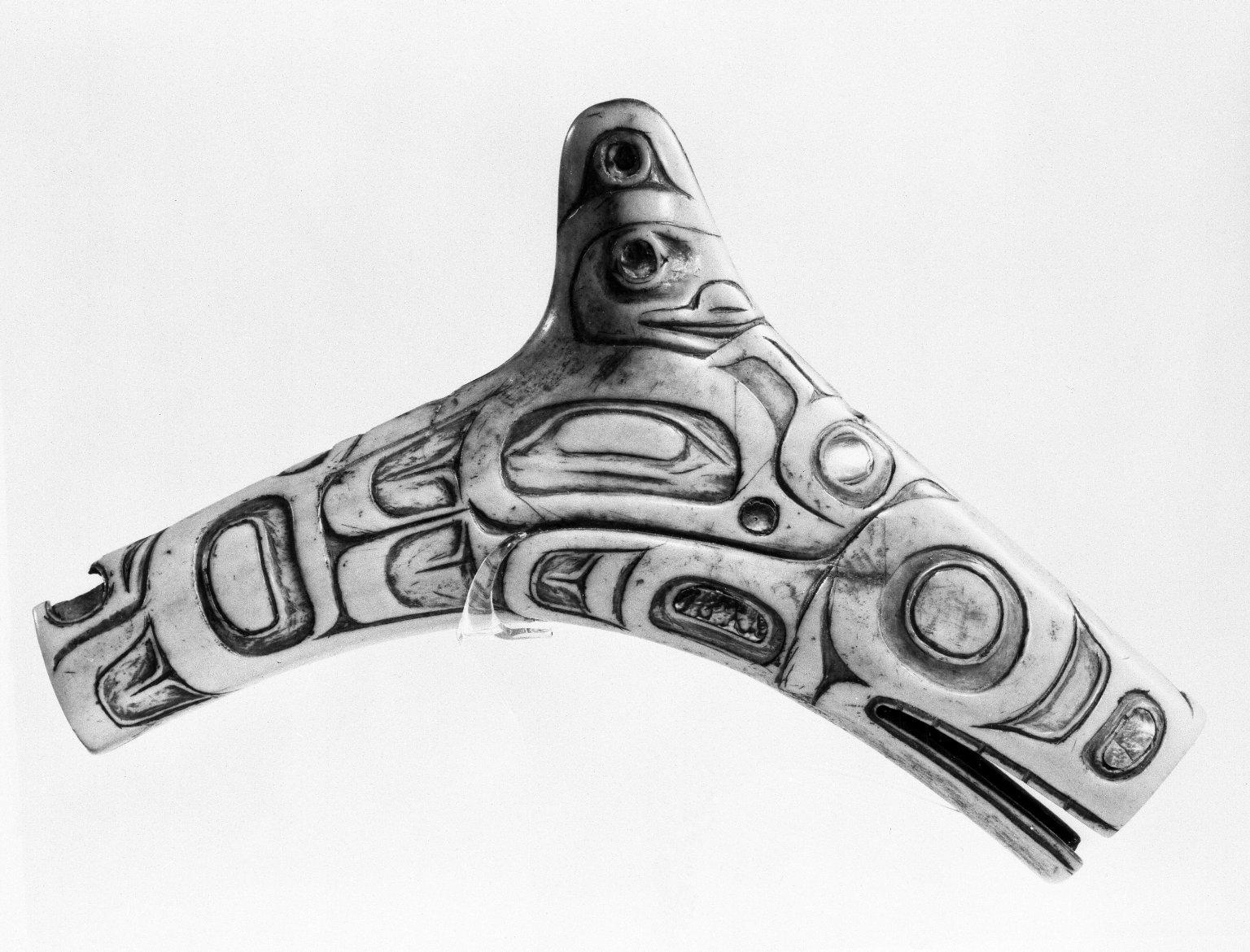Shaman's Charm or Soul Catcher

Brooklyn Museum photograph
Object Label
Animals indigenous to the Northwest Coast region play prominent roles in this group of objects. Rattles were part of chiefs’ ceremonial dance regalia; the Tsimshian example depicts a shaman touching tongues with a frog as he rides on the back of a raven with another frog in its mouth. The clapper by the Haida artist Charles Edenshaw takes the form of a halibut with the face of the fish’s spirit represented on the tail. The Haida frontlet, which would have been attached to a headdress, represents a raven emerging from the mouth of a whale. The Tlingit soul catcher, of a type used by shamans to capture and protect people’s souls during healing ceremonies, depicts a whale with a fin rising from the center of its back.
Caption
Tlingit. Shaman's Charm or Soul Catcher, late 19th or early 20th century. Bone or Ivory, abalone shell, 9 1/2 x 6 x 1 1/4 in. (24.1 x 15.2 x 3.2 cm). Brooklyn Museum, By exchange, 73.110. (Photo: Brooklyn Museum)
Gallery
Not on view
Collection
Gallery
Not on view
Collection
Culture
Title
Shaman's Charm or Soul Catcher
Date
late 19th or early 20th century
Geography
Possible place made: Canada, Possible place made: United States
Medium
Bone or Ivory, abalone shell
Classification
Dimensions
9 1/2 x 6 x 1 1/4 in. (24.1 x 15.2 x 3.2 cm)
Credit Line
By exchange
Accession Number
73.110
Frequent Art Questions
How does the Soul Catcher work? Should I be afraid?
 Tlingit Soul Catchers were intended to help a person, rather than harm them, so you're safe! The idea was that the implement could hold a person's soul in place while the shaman healed them.
Tlingit Soul Catchers were intended to help a person, rather than harm them, so you're safe! The idea was that the implement could hold a person's soul in place while the shaman healed them.
Have information?
Have information about an artwork? Contact us at